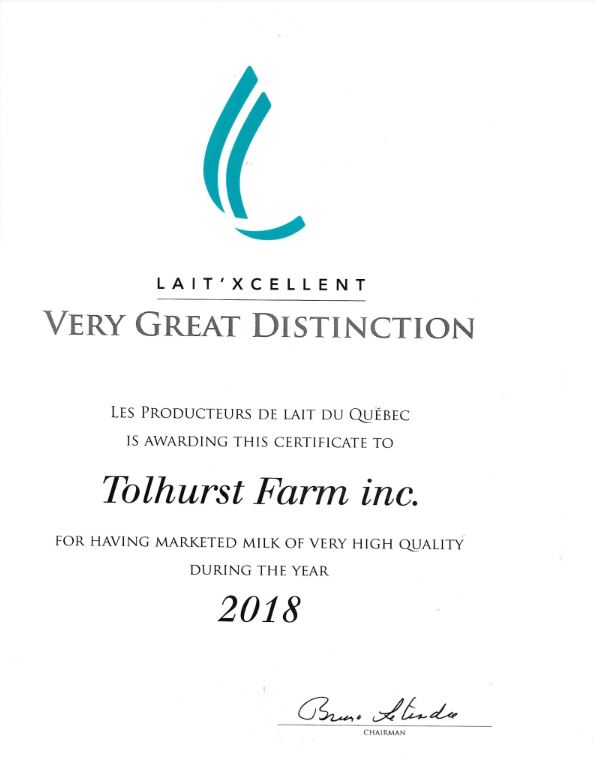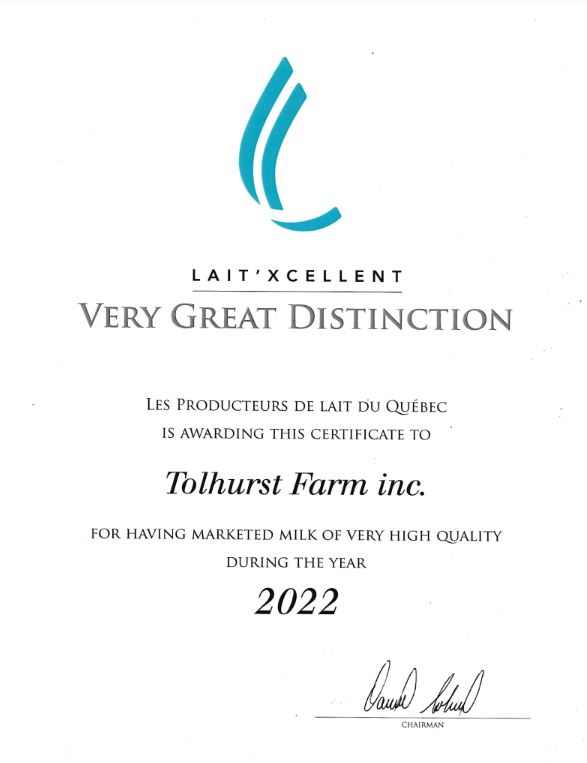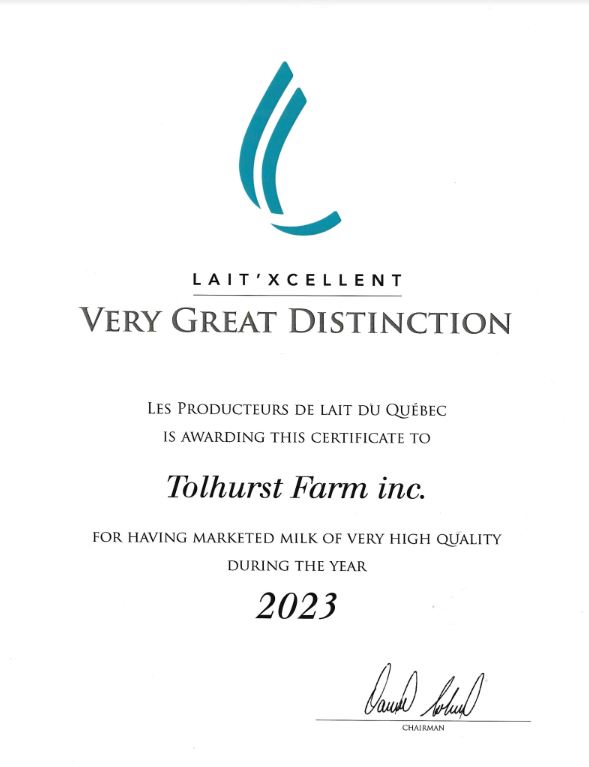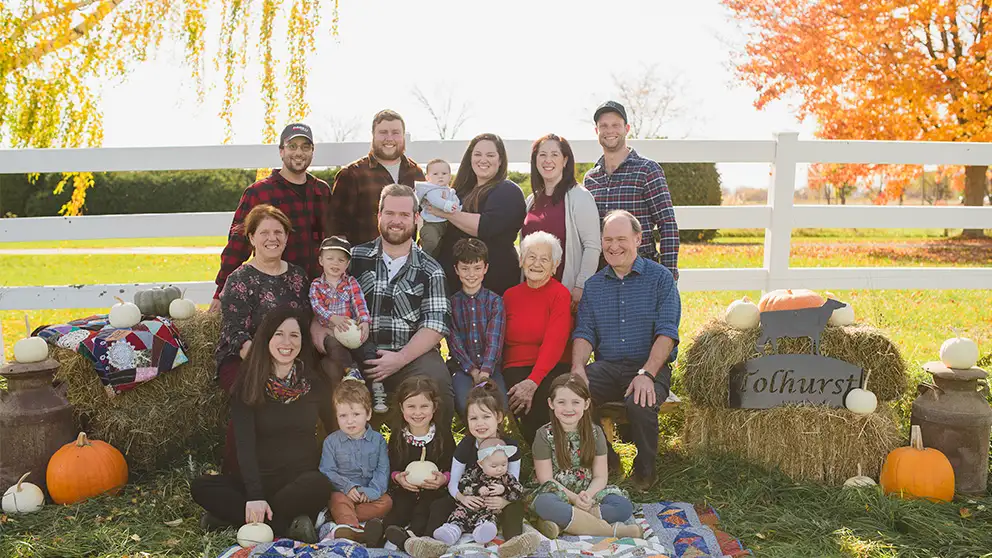
Tolhurst Farms : un modèle de gérance de l’environnement et de responsabilité sociale
Amy Tolhurst et sa famille s’efforcent au quotidien de donner vie au concept de durabilité dans leur exploitation laitière québécoise.
Ken et Amy Tolhurst, ainsi que leur fils Bob, gèrent l’entreprise Tolhurst Farms, qui compte un troupeau de 120 vaches laitières et environ 350 acres de cultures.
« Je n’ai jamais rencontré de producteur agricole qui ne souhaitait pas faire de son mieux », affirme Mme Tolhurst. C’est justement pour faire de son mieux et assurer un avenir durable et inclusif que Tolhurst Farms met l’accent sur trois aspects essentiels de ses activités agricoles : une approche proactive en matière de durabilité environnementale, une atmosphère familiale et une vision globale de l’exploitation.
Le parcours vers la décarbonation
Motivée en partie par les objectifs des Producteurs laitiers du Canada consistant à aider le secteur à atteindre la carboneutralité d’ici 2050, Tolhurst Farms s’est engagée à participer à un projet de recherche dans le cadre de l’Initiative des laboratoires vivants, un programme d’Agriculture et Agroalimentaire Canada visant l’adoption de solutions agricoles durables.
L’exploitation laitière offrait un milieu de choix pour travailler avec des chercheurs, car elle est située près d’un cours d’eau, est dotée d’un plan de relève et possède une bonne installation pour la collecte de données. Autre avantage de l’exploitation : des femmes y travaillaient activement.
Mme Tolhurst a rencontré plusieurs chercheurs avant le début de l’étude et elle était impatiente de les voir entreprendre leurs travaux afin de pouvoir apprendre à leurs côtés. L’exploitation agricole a cerné deux projets prioritaires : la gestion du fumier et la qualité de l’air dans les étables.
Ne disposant pas de suffisamment de terres pour épandre le fumier produit par leur troupeau, les Tolhurst exportent leur fumier et cherchent de nouvelles options. Le projet sur la qualité de l’air tient particulièrement à cœur à Mme Tolhurst.
« Je suis également infirmière, et mon beau-père a souffert de la maladie appelée poumon de fermier, alors les travaux sur la qualité de l’air et la ventilation ont une grande importance pour moi, explique-t-elle. Je veux m’assurer que tout le monde reste en aussi bonne santé que possible. »
Mme Tolhurst aime recevoir la rétroaction des chercheurs à mesure que les projets avancent. Les renseignements qui lui sont fournis lui permettront d’apporter des améliorations à long terme à l’exploitation agricole.
« Je vais utiliser ces résultats pour motiver notre équipe à poursuivre son excellent travail et à continuer à adopter de bonnes habitudes et à prendre des décisions réfléchies », déclare-t-elle.
Néanmoins, il faut du temps pour changer les habitudes de toute une vie, en particulier lorsqu’on travaille dans une industrie comme l’agriculture, qui repose sur la stabilité et la routine. Mais l’heure n’est plus à la réflexion sur les changements, selon Mme Tolhurst, et il est temps de mettre en œuvre les solutions agricoles durables sur lesquelles portent les travaux des laboratoires vivants.
« Notre monde traverse une crise environnementale, soutient-elle. Nous vivons tous dans ce monde. Le secteur laitier est-il le seul à y contribuer? Absolument pas. L’agriculture et la production d’aliments pour notre population font partie des fondements de notre pays.
Grâce à nos choix réfléchis, nous pouvons servir d’exemple pour les producteurs de notre secteur et d’autres industries. En illustrant les avantages et les bienfaits que procurent les bons choix, nous favorisons la réussite de notre milieu. »
La famille et la santé d’abord
Comme un grand nombre d’exploitations agricoles, l’entreprise Tolhurst Farms fait appel à la famille et à des travailleurs étrangers temporaires pour assurer l’exécution de ses activités au quotidien. Il est important pour les Tolhurst de trouver le meilleur équilibre entre la famille et les travailleurs. Ils ont la chance de pouvoir compter sur des travailleurs guatémaltèques issus de la même famille qui reviennent travailler pour eux depuis de nombreuses années.
« Nous voulons nous assurer que tout le monde s’entend bien, en plus d’inculquer à tous l’importance de prendre des congés », déclare-t-elle. Les Tolhurst doivent donc adopter eux-mêmes cette habitude afin de démontrer les avantages d’un bon équilibre vie professionnelle/personnelle.
Mme Tolhurst a étendu cette approche axée sur la santé à sa collectivité en créant une coopérative locale de santé pour soutenir les services de santé locaux.
« La coopérative s’attache à répondre aux besoins des agriculteurs, qui ont souvent de la difficulté à gérer leur santé ou à en faire une priorité », confie-t-elle.
Une vision à long terme
Le troisième aspect essentiel sur lequel Mme Tolhurst se concentre est la vision globale de son exploitation agricole, depuis la planification de la relève jusqu’à la collaboration avec des chercheurs afin d’améliorer les pratiques exemplaires en vue d’une durabilité à long terme.
« Nous considérons que tous les membres de notre famille font partie de l’exploitation agricole, même s’ils ne sont pas tous des employés, affirme Mme Tolhurst. L’intendance de la terre, ou sa gérance, s’inscrit dans nos valeurs. Ici, nous avons tous une passion pour la terre. »
Mme Tolhurst sait que les changements progressifs constituent la solution pour tous les aspects de son exploitation.
« Les changements graduels sont souvent plus durables que les énormes changements, et nous pouvons nous y attaquer en travaillant tous ensemble. »
Article par : Jane Robinson
Carbon-neutral milk: Living into sustainable dairy
For the last 2 years we have been among the 5 finalists for our regions for the Agropur milk quality award.
Information slideshow:
https://drive.google.com/file/d/1K1lFH6n0CoLSJKqtmEV3ayXuG9J1v3RG/preview
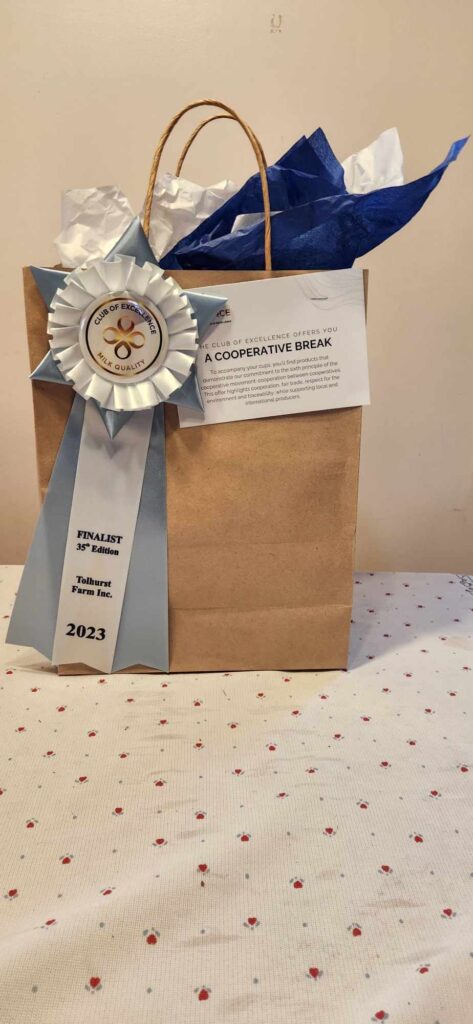
For the last 7 years we have received the award of Very Great Distinction with the Federation of Milk Producers of Quebec.

